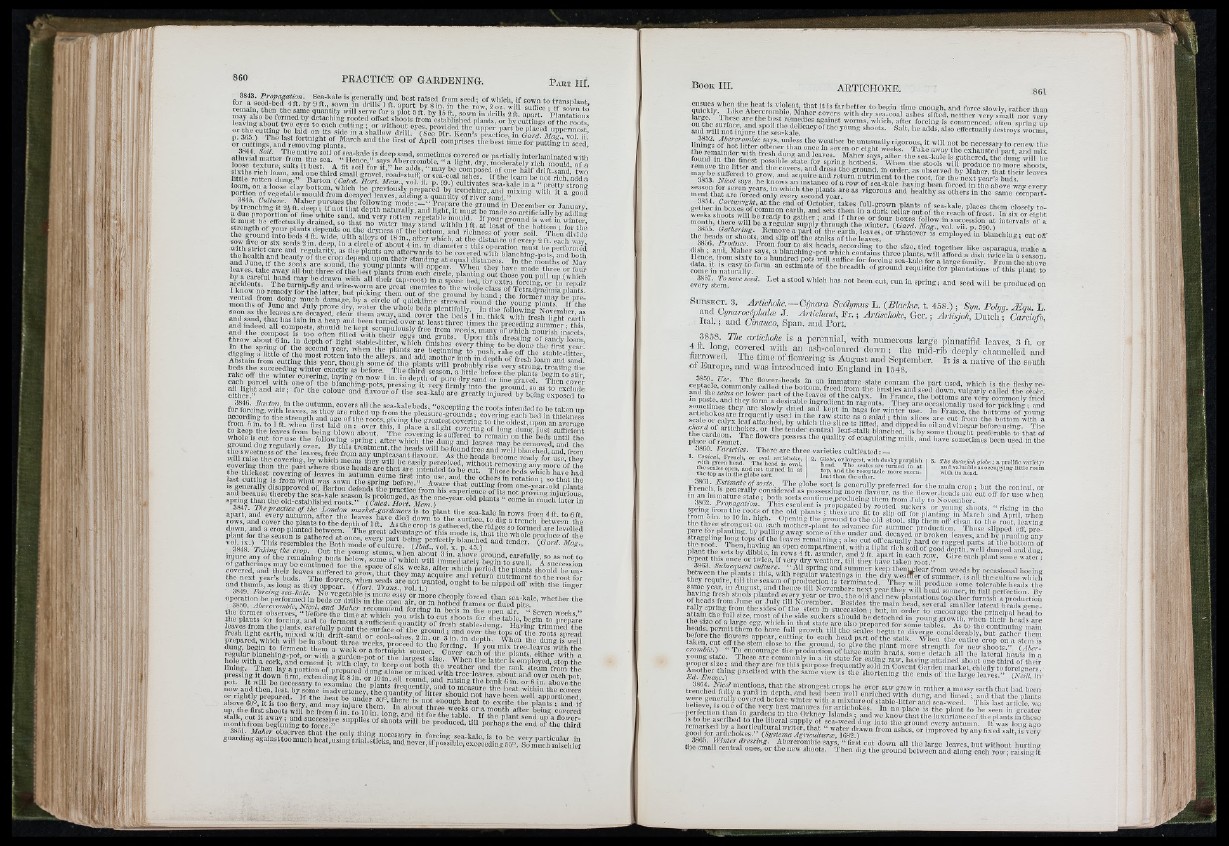
S : 5 “ S “ ' S ? H S S ^
i,’r J , 7 „ 7 r 'e r i 'v ' ] ; f t T . r i r e ‘- e f.rtt of Aprl, coraprisez .L ta o s t { Z X / / / /
| S S S ~ S £ f e # ^ ^
S S ? ? | P P p S S S i l E ®
i p i i i i P i l i S i i P
i i i s i f S i i f i g l i «
spring than the old-established roots.” (Caled IIo,-i ¿ ew ? ) ^ ^^ter m
: p i : / . B S i S l S i ¥ 5 s B B i - S B ^
I P f S S i - S S i c l ^
i n t e 1 o . 5 ¥ r f h f r o 7 7 i i „ r i b ‘u r i b S r i s ? 7 i 7 '; 'S ^ ^ ^ ^ ^ ^ '» to
p re leaves from the plants, carefully point the surf-ieo of fo? / / a ¿ b le -d u n g . Having trimmed the
fresh light e a rth% ix ^ d with f r iC a n d o? c S l afo ®P^®«d
prepare<l. which will be in about three w/cks nraceed L fo« w L ? ®
dung, begin to ferment them a week o T S t o i / h ? « / / , ? ¥ ^ you mix tree-leaves with the
ragular blanching-pot, or with a garc!en-pot of th e lar??st Viz« Wto plants, either with a
10 e with a cork, and cement it with clay to k lo v o S both fo« „f^afo ®™Ploy®ft. »top the
lining. Then lay a portion of prepared c une u / L / r ®®^* the
pressing it down firm, extending i f 8 in or 10 in ¡4? ? " d h trae-leaves. about and over each pot,
pot. It will be necessary to ex/mine tlm nia/t?' fr a /? /? ) ? ; ® ‘h®
now and then, lest, by some inadvertency the m rm tfti / f 4 within the covers
o r rightly prepared. If the heat be u i i£ r tlfer/ i? ¿ o n well apportioned,
above 60°, it is too fiery, and mav ininr« fo«rn ’ i , ®"®“ g l\ h®at to excite the plants ; and if
up. th e firstsh o o ts w ilfb e from G in . to 10 in l o n i f S l fit f ^ l L T i h f t h °®^? covered
stalk, cut It away; and successive supplies of s h o / ts ^ i l l h« L / a i b n u 1’*®"^ ''' Howermonth
from beginning to force ” produced, till perhaps the end of th e third
mmmstmssmms
t., a’i X r i o r i t T S ’e r a p .„ p .7 ;„ T U cM „ P ; eu. off
J / l l / " " “ “ ' " - " “ 're o l which has not boon cut, run In spring,, .md seed will be produced on
S umbSsEeCcTt .. 3. Articliohe — Cypara Scbhjmus L. (Blackw. t. 458.) ; Stjn. Pohjg. Jdqu.
and Cynarocephala: J Artwkaut, F r .; Artisc/iohe, Gcr.; A r i i / Dutch) c J c i
Ttal; and Cmauco, Span, and Port. -
5SSS. The artichoke is a perennial, avith nnmcrous large pinnatifid leaves, 3 ft. or
trmwrnf "'“ri™ 5 ‘he mid-rib deeply channelled and
oorf iFumuo npne'o, . and!“ w a”s “i n“et ro»du"c’reid" ®mt o" E7 n"g®la"n'd in 1S5c4p8tcmbcr. It is a native of the south iiSMSPasB 38G0. V a n e tie s . There are three varieties cultivated • —
mwsmmmirnmsmiim
2. Globe, or l.nrgcst, with dusky purplish
head. Tlio scales ,are turned iu at
top, and the receptacle more succulent
than the other.
a«fi9 Pa«V,I 7- ’ n®u- ®®°t.inue.producing thorn from July to November. I -
Carciofo,
5. The dwarfish globe ; a prolific variofr-
,a..n¡•d1 , Talu1a hle1 as occu'p•y' in®g little room
1. Conical, French, or oval artichoke,
with RTcon head, Tho head is oval
the scales oiien, and not turned in at
the top as in the globe sort.
i u i r i » ) " " re iiliorteninB th e ends of the lar[.e le a v e s^ [ S r i , ;
gr i< f f 7 r i 7 e r i k e r i™ ; S » [ r i ’% S L r i 1 r i 2 r i " ™ “ " “ • r e »-■"=" - t e s v e f y
t l . f f r i l t e i ‘r i i r i r i s r i ; . S ' ? r e t a “ £reys, “ r.rs^^ down all tho largo leaves, bu. without hurting
the small central ones, or the new shoots. I h e n dig the ground between and along each row; raising it